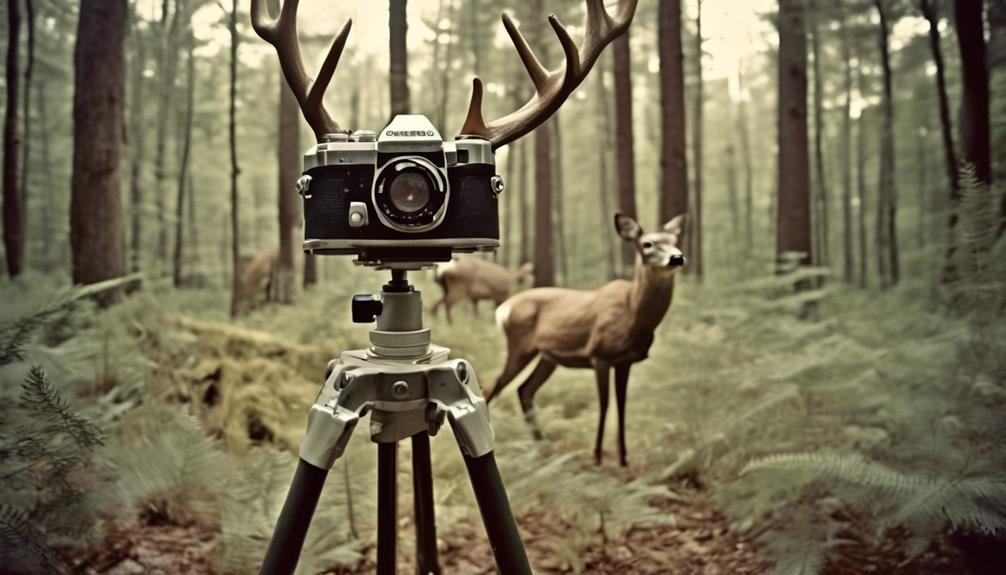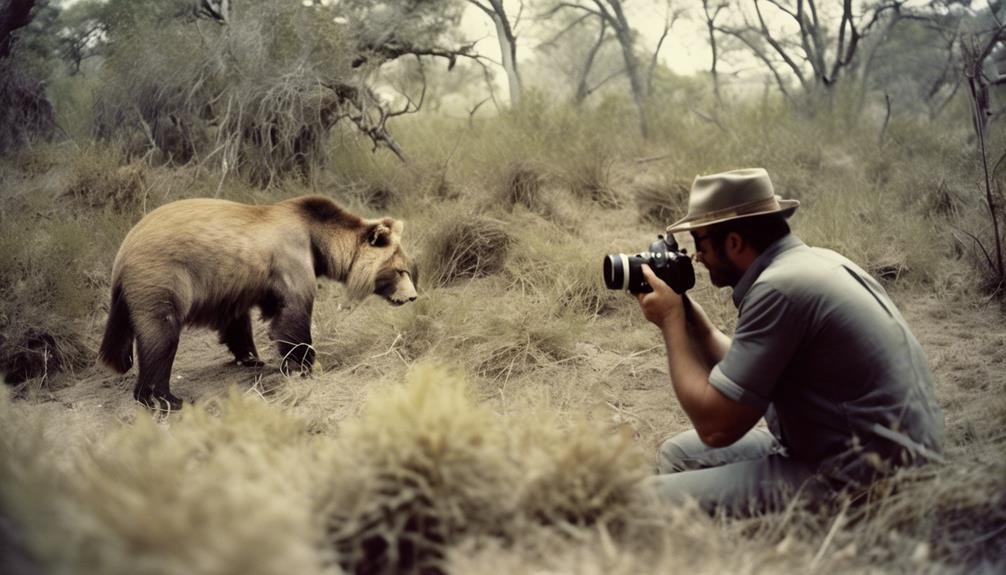
When it comes to wildlife photography, capturing the essence of untamed nature through the lens of a mirrorless camera is like embarking on a journey of discovery. The thrill of freezing a moment in time, of immortalizing the raw beauty of the natural world, is an experience like no other. But as mirrorless enthusiasts, we often face unique challenges in our quest to capture the elusive and untamed. How do we ensure that our gear is up to the task? What techniques can we employ to hone our skills and capture those breathtaking wildlife shots? Join us as we explore the world of wildlife photography and learn how to harness the power of mirrorless cameras to preserve the wonder of the natural world.
Choosing the Right Mirrorless Camera
How do we select the best mirrorless camera for capturing stunning wildlife photographs? It all starts with understanding the camera features and lens options that are essential for wildlife photography. When it comes to mirrorless cameras, we are presented with a wide array of options, each offering unique features tailored to different shooting styles. One key consideration is the autofocus system, which is crucial for capturing fast-moving wildlife. Look for a camera with advanced autofocus capabilities, such as eye-tracking and animal detection, to ensure that your subjects are always in focus.
Another essential factor to consider is the availability of telephoto lens options. Wildlife photography often requires significant reach, so having access to a variety of telephoto lenses is a game-changer. Additionally, the camera's image stabilization capabilities play a significant role in ensuring sharp and blur-free images, especially when using long telephoto lenses.
As technology continues to advance, innovative camera features such as silent shooting modes, high-speed continuous shooting, and weather-sealing are becoming standard in many mirrorless cameras, providing wildlife photographers with the tools they need to push the boundaries of their craft. When selecting a mirrorless camera for wildlife photography, it's crucial to carefully evaluate the available lens options and camera features to ensure that they align with your specific photographic needs.
Essential Wildlife Photography Gear
When preparing for wildlife photography, selecting the right gear is essential for capturing stunning and dynamic images of animals in their natural habitats. Wildlife photography lenses play a crucial role in achieving sharp and detailed shots from a distance. For mirrorless enthusiasts, telephoto lenses with a focal length of 300mm or higher are ideal for capturing wildlife without disturbing their natural behavior. These lenses enable us to fill the frame with our subjects, bringing out intricate details and expressions. Additionally, essential accessories such as a sturdy tripod with a gimbal head provide stability and smooth panning for tracking wildlife movements. A remote shutter release allows us to capture images without physically touching the camera, reducing the risk of camera shake. Moreover, a quality camera bag is essential for safely carrying and organizing our gear while out in the field. By investing in the right wildlife photography lenses and essential accessories, we can elevate our wildlife photography and capture breathtaking moments with precision and innovation.
Understanding Wildlife Behavior and Habitats

As wildlife photographers, we know that understanding wildlife behavior and habitats is fundamental to capturing compelling and authentic images of animals in their natural environments. This understanding allows us to anticipate animal movements and behaviors, ultimately leading to more impactful photographs. Here are essential aspects to consider:
- Animal Tracking: Utilizing knowledge of animal tracks, signs, and behavior patterns enables us to predict where and when wildlife may appear, increasing our chances of capturing stunning images.
- Environmental Conservation: By understanding wildlife behavior and habitats, we can also advocate for their conservation. Through our photography, we can raise awareness about the importance of preserving natural habitats for the species we photograph.
- Habitat Immersion: Understanding the environments in which wildlife thrives allows us to immerse ourselves in their world. This allows for a deeper connection with our subjects, resulting in more intimate and powerful images.
Techniques for Capturing Stunning Wildlife Shots
Utilizing advanced tracking techniques and understanding the nuances of wildlife behavior, we can employ strategic positioning and patience to capture stunning and authentic images of animals in their natural habitats. Wildlife tracking involves studying animal movements and behaviors to anticipate their next actions, allowing us to position ourselves for the perfect shot. It's essential to utilize natural light techniques to enhance the beauty of wildlife photography. By understanding how natural light interacts with the environment, we can create captivating images that showcase the true essence of the animal and its surroundings. Patience is key when capturing wildlife shots. Observing and waiting for the right moment can result in breathtaking and natural photographs. Additionally, employing innovative techniques, such as using telephoto lenses and understanding the art of composition, allows us to create visually compelling images. By continuously refining our skills and staying attuned to the environment, we can consistently capture stunning wildlife shots that showcase the beauty and authenticity of nature.
Post-Processing Tips for Wildlife Photography

In post-processing wildlife photography, we can enhance the visual impact and authenticity of our images by employing advanced editing techniques that bring out the natural beauty of the animals and their surroundings. To achieve this, we follow a meticulous editing workflow that ensures the preservation of the raw, organic essence of the wildlife while enhancing the overall visual appeal. Here are some essential elements of our editing workflow:
- Selective Adjustments: We use precise, selective adjustments to highlight the intricate details of the wildlife subjects while maintaining the integrity of the natural environment.
- Color Grading: Our color grading process is aimed at achieving a natural and vibrant color palette that accurately represents the wildlife and their habitat.
- Utilizing Lightroom Presets: Leveraging carefully curated Lightroom presets can significantly streamline the editing process while maintaining a consistent and professional look across our wildlife photography portfolio.
Frequently Asked Questions
What Are Some Ethical Considerations to Keep in Mind When Photographing Wildlife?
When photographing wildlife, ethical considerations are crucial. We prioritize wildlife preservation by approaching animals with respect and awareness. Conservation awareness guides our actions, ensuring our photography contributes positively to the natural world.
How Can I Best Approach and Interact With Wild Animals Without Disturbing Them?
Approaching animals in the wild requires sensitivity and respect for their boundaries. We prioritize ethical photography and aim to interact with wildlife in ways that minimize disturbance. Our innovative techniques prioritize the well-being of the subjects.
Are There Any Specific Legal Regulations or Guidelines for Photographing Wildlife in Different Locations?
When it comes to wildlife photography, there are legal regulations and location-specific guidelines that we need to be aware of. Understanding the wildlife photography rules in different areas is crucial to capturing stunning shots responsibly.
What Are Some Ways to Support Wildlife Conservation Efforts Through Wildlife Photography?
Supporting wildlife conservation through photography involves capturing impactful images, using ethical photography techniques, and sharing them to raise awareness. By collaborating with conservation organizations, we can contribute to protecting and preserving wildlife habitats.
How Can I Use Wildlife Photography to Tell a Compelling Story About the Natural World and Its Inhabitants?
We can use wildlife photography to tell a compelling story by applying composition techniques to capture intriguing perspectives, and using lighting techniques to enhance the mood. Post-processing wildlife images can further amplify the narrative.
